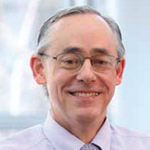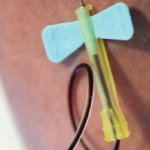Through his leadership roles at UW, the Western Society for Clinical Investigation and the Northwest Rheumatism Association, as well as activities at the local Arthritis Foundation, Dr. Mannik helped transform the Northwest U.S. from a place with low awareness and skills in rheumatic disorders to a stronghold of high-quality clinical care and outstanding basic rheumatologic investigation.
Dr. Mannik’s scientific achievements were exceptional. His research career was focused on the role of immune complexes in rheumatic diseases, particularly RA and SLE. His observations regarding rheumatoid factors, in particular self-associating IgG rheumatoid factor, as a major source of immune complexes in the rheumatoid joint, remain completely original and unchallenged. He received the Lee C. Howley Prize from the Arthritis Foundation in 1988 and the ACR Distinguished Basic Investigator Award in 1997.
Another leader trained by Dr. Mannik, William P. Arend, MD, Distinguished Professor of Medicine Emeritus at the University of Colorado School of Medicine, says, “Mart greatly expanded my horizons and opened my eyes to the beauty of basic science as it applied to the rheumatic diseases. My career in academic medicine was shaped by his intellect and drive. He had previously worked on the structure of the IgG molecule at the Rockefeller Institute, and in Seattle he applied his extensive knowledge of basic immunology to the rheumatic diseases.
“Mart showed me how to think as a scientist,” continues Dr. Arend. “He stimulated my ideas by his sharp thought process and was able to shape my own development by his inquisitive reasoning and questioning. He was working on the mechanism of deposition of soluble immune complexes in the kidneys in SLE. I started on a similar question in RA: What was the nature of soluble immune complexes in the sera of patients in RA, and what was the mechanism of their deposition in the joints? This started me on an extensive series of experiments on the interaction of immune complexes with monocytes and macrophages. We discovered a new form of IL-1, called IL-1 receptor antagonist, that interacted with a single chain IL-1 receptor on cells but failed to bind to a second chain that initiated initiation. In fact, it functioned as an endogenous inhibitor of IL-1 function. Mart’s intellect helped me through the thought process of this question and assisted me in finding the techniques to address it.”
“I fondly remember Mart’s openness and his willingness to discuss issues,” says Dr. Pope. “However, after all the years that have passed, I remember during my formative years wanting him to tell me what to do to address the question of the day. I kept saying to myself, ‘Just tell me what to do, and we can accomplish the goal quickly.’ He never did, he wanted me to think it through and figure it out. That was a lesson that I did not appreciate at the time, but now I understand the wisdom, and am forever grateful.”


